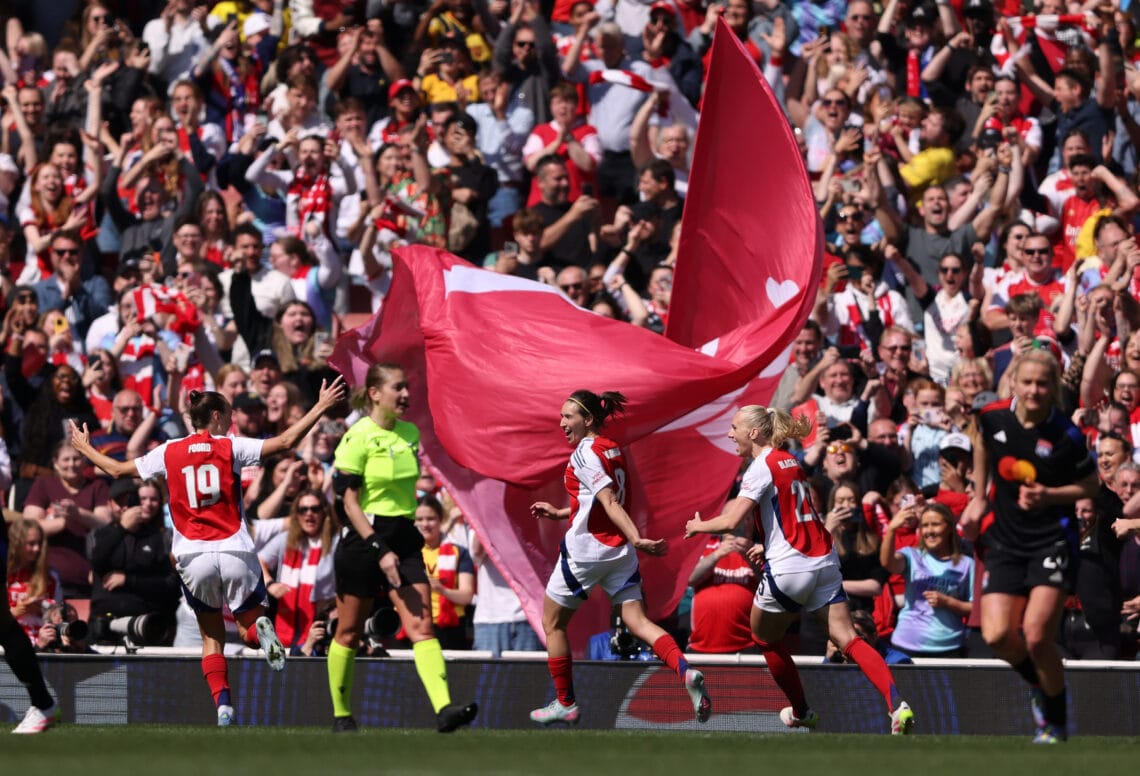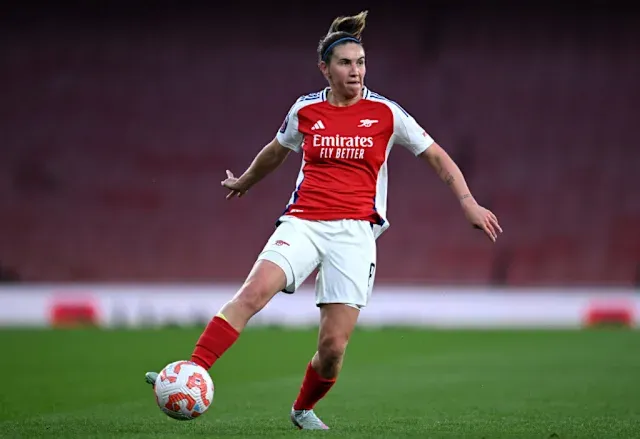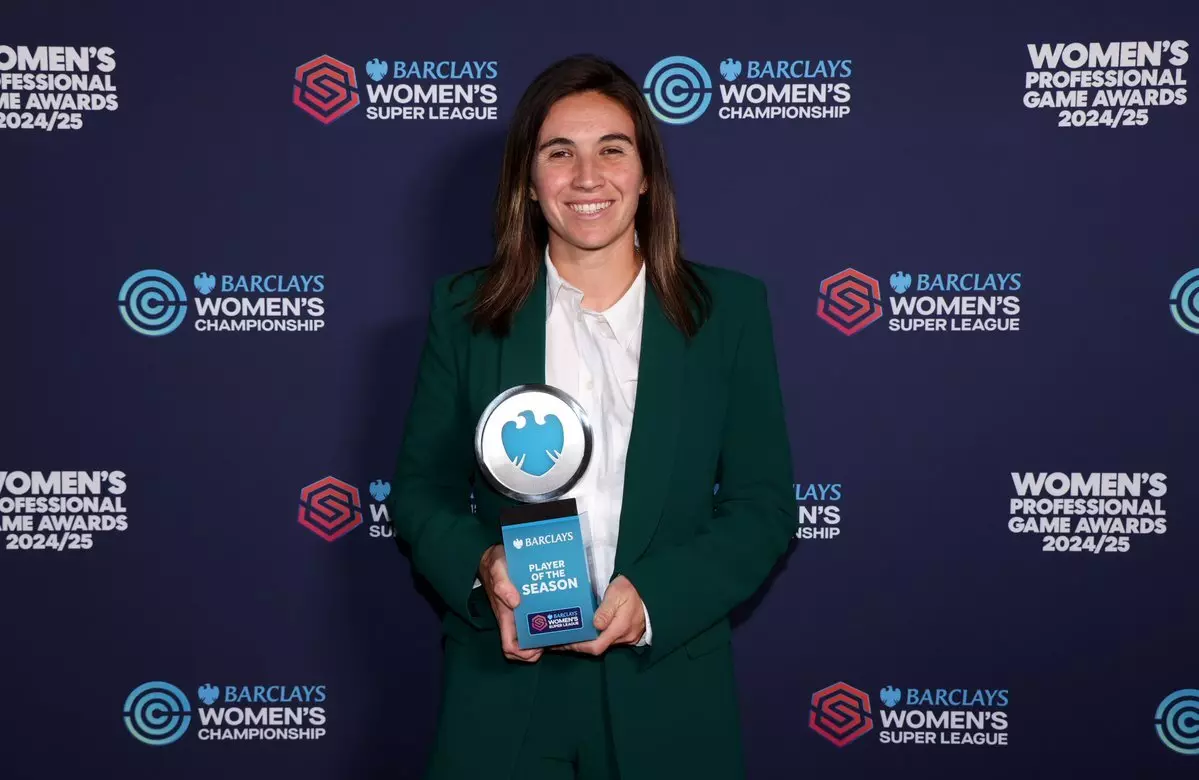The Emotional Echo Chamber: How Mariona Caldentey's Vulnerability Redefined Rivalry in Women's Football
Explore the emotional depths of women's football through Mariona Caldentey's candid statement, "Happy for them, sad for me."

Written by Lavanya, Intern, Allegedly The News
BARCELONA, August 29, 2025
The final whistle screeched through the air, a sound both of joyous triumph and crushing defeat. For the players on the pitch, the moment was a culmination of years of relentless training, sacrifice, and ambition. For Spain's Mariona Caldentey, however, it was more than just a loss. Following her national team's heartbreaking defeat to England in the Euro 2025 final, a match decided by a tense penalty shootout, she offered a statement that rippled far beyond the world of sport: "Happy for them, sad for me."
Caldentey, having just moved to Arsenal, was facing her new teammates—players like Leah Williamson, Beth Mead, and Chloe Kelly—who were now celebrating the biggest victory of their careers. Her simple, yet profound, words captured the intricate, often-invisible emotional landscape of elite women's football. This is a world where competitors are also friends, where national pride clashes with club loyalty, and where the human experience of joy and sorrow is on full, unedited display.
The Unseen Psychology of Divided Loyalties
Mariona Caldentey's "happy for them, sad for me" statement isn't just a turn of phrase; it's a perfect encapsulation of a psychological phenomenon known as cognitive dissonance. This occurs when an individual holds two or more conflicting beliefs or values at the same time. In Caldentey's case, the two beliefs were: "I am a professional footballer who is devastated by a major tournament final loss," and "I am a friend who genuinely celebrates the success of my close teammates." The fact that she was able to articulate both feelings without diminishing either is a testament to an advanced level of emotional intelligence and self-awareness.
For a long time, the dominant narrative in sports psychology, particularly in men's sports, has been one of ruthless competition. The opponent is a foe to be vanquished, and any emotional connection is a weakness. This model, however, fails to capture the intricate interpersonal dynamics that define much of modern women's football. A study by the University of Birmingham found that teenage girls who play football report higher levels of confidence and well-being than those who play other sports, largely because of the strong sense of togetherness and friendship fostered within teams. This bond doesn't disappear when players step onto opposite sides of the pitch.
In fact, the pre-game and post-game emotions in women's football are heavily influenced by the interpersonal relationships between players. Caldentey’s public sentiment reflects a reality where players must mentally compartmentalize their relationship with an opponent. The moment the whistle blows, they are a professional athlete focused solely on winning. But once the game ends, the human being returns, and they must deal with the emotional fallout—whether that's reconciling with a friend they just tackled or congratulating a teammate who has just tasted victory at their expense. This requires significant mental resilience and emotional labor, often overlooked by those who see only the final score.
The Club vs. Country Conundrum
The Euro 2025 final was a masterclass in the club vs. country dilemma. Mariona Caldentey’s move to Arsenal put her directly in the path of her new clubmates on the English national team. The very people she would soon be training with, sharing a dressing room with, and fighting for a Women’s Super League title with, were the ones celebrating their triumph over her. The situation is a microcosm of the globalized nature of the sport. Players travel across continents to play for elite clubs, forming bonds that are as strong, if not stronger, than their national loyalties.
The unique challenge for these athletes lies in the rapid-fire transition. After the emotional high or low of a major international tournament, they must return to their club training facilities and immediately reset their mindset. The past is the past. Club loyalty must now take precedence over national disappointment. Caldentey herself noted that her Arsenal teammates made the transition “easy,” showing a level of respect and understanding that is crucial for maintaining a healthy team environment. This suggests a sophisticated culture within these clubs, one that prioritizes a supportive, empathetic environment, understanding that the emotional well-being of their players is paramount to their on-field success.
This dynamic is not merely about individual players; it's a systemic challenge for coaching staff and sports psychologists. They must facilitate a smooth reintegration, ensuring no lingering resentments or emotional baggage disrupt team cohesion. Techniques like team debriefings, one-on-one sessions, and a focus on collective future goals are essential. This is where the emotional intelligence of the players truly shines, as they must be able to put personal feelings aside for the greater good of the team. The ability to do so, as Caldentey demonstrated, is the mark of a true champion.

A Historical Perspective: When Rivals Become Teammates
While Caldentey's story is particularly poignant, the phenomenon of rivalries turning into partnerships has a rich history across sports. In men's football, a classic example is the dynamic between Lionel Messi and Sergio Ramos. For over a decade, they were the ferocious faces of Barcelona and Real Madrid, their rivalry defined by heated clashes in El Clásico. When they surprisingly became teammates at Paris Saint-Germain, the world watched with bated breath. Their relationship, while not overtly affectionate, was a professional truce built on mutual respect. This showed that even the most bitter of on-field adversaries could find common ground.
Another powerful example comes from the NBA with Kobe Bryant and Shaquille O'Neal. While teammates, their personal rivalry was a well-documented saga of ego and ambition. They won three championships together, but their feud often overshadowed their success. Their story serves as a cautionary tale: while talent can force a successful partnership, the lack of emotional maturity can make it a turbulent, short-lived affair.
In contrast, the tennis rivalry between Roger Federer and Rafael Nadal is a masterclass in mutual respect. Their fierce on-court battles were legendary, but their off-court friendship and admiration for each other were equally profound. The image of Nadal weeping at Federer’s retirement is one of the most powerful displays of sportsmanship in recent history. It highlights that the most compelling rivalries are not born of hatred, but of a deep respect for a worthy opponent.
The reason Caldentey's experience feels more relatable and resonant is the level of unvarnished honesty. While the rivalries of past male athletes were often portrayed as a clash of titans, a masculine battle for supremacy, women's football, as it has grown, has embraced a more nuanced and emotionally complex narrative. Players are more willing to discuss their mental health, the pressures of the game, and the personal relationships that are central to their lives. This authenticity is not a sign of weakness; it's a form of strength that has built a new, more loyal kind of sports fan.
The Humanization of the Athlete: A Takeaway
Mariona Caldentey’s “happy for them, sad for me” statement is not an isolated incident; it's a symptom of a broader, more profound trend in sports. The public is craving authenticity. They want to connect with athletes on a human level, to see their struggles and triumphs not as abstract victories, but as part of a shared human experience. This shift is particularly pronounced in women's football, where athletes are forging a new path, one where vulnerability and strength are not mutually exclusive.
The theory at play here is that emotional storytelling is a key driver of modern sports fandom. The fans of women’s football are not just spectators of a game; they are invested in the lives, stories, and journeys of the athletes. This is a deliberate and conscious choice by the athletes themselves, who have used social media and interviews to share their unfiltered thoughts. They are building a brand not just on their athletic prowess, but on their humanity. This makes their triumphs more celebratory and their losses more heartbreaking. The ability to articulate feelings, to share the emotional weight of a loss, and to celebrate a friend’s success despite personal pain is what separates the modern athlete from their predecessors. It makes the game more than a game; it makes it a powerful, relatable narrative.

Beyond the Final Whistle: Discussion Questions
How might the increasing emotional transparency of athletes influence traditional sports media's approach to storytelling, moving beyond simple win/loss narratives? Do you believe the honesty displayed by players like Mariona Caldentey will eventually become the new standard in all professional sports, or is it a unique characteristic of women's football?
Sources
Yahoo Sports, CNN Sports, FC Barcelona Players, Arsenal.com, and academic studies on sports psychology and emotion.




